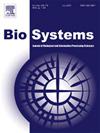基于分裂发生的精神障碍统一致病假说。
IF 2
4区 生物学
Q2 BIOLOGY
引用次数: 0
摘要
重度抑郁症、双相情感障碍和精神分裂症具有显著的遗传、表观遗传和表型重叠,表现为维度精神病理和趋同的神经影像学发现。这些共同的特征导致了探索共同潜在病理生理机制的各种模型,包括兴奋-抑制失衡、三重网络模型、网络分析和社会脱节。虽然这些模型提供了有价值的见解,但一个统一的框架仍然难以捉摸。分裂成因是一个跨学科的概念,旨在调和心理健康状况的不同观点。互补性分裂的特点是由于抑制控制不足导致功能性分离,互补性分裂导致神经、认知和社会网络中的刚性过度激活和低激活,损害系统的灵活性。这种病理过程是抑郁症、双相情感障碍和精神分裂症的核心特征,取决于其在网络中的位置。分裂发生假说认为,当个体被过度的压力或紧张所压倒时,他们可能会经历崩溃或断开连接,以防止不可逆转的损害,这反映了进化适应。重要的是,分裂发生的潜在可逆性,特别是通过促进系统重新融合的干预措施,为进一步探索提供了有希望的治疗途径。本文章由计算机程序翻译,如有差异,请以英文原文为准。
A unified pathogenic hypothesis for mental disorders based on schismogenesis
Major Depressive Disorder, Bipolar Disorder, and Schizophrenia, share significant genetic, epigenetic, and phenotypic overlap, manifesting as dimensional psychopathology and convergent neuroimaging findings. These shared features have led to various models exploring common underlying pathophysiological mechanisms, including excitatory-inhibitory imbalance, the triple network model, network analysis, and social disconnection. While these models offer valuable insights, a unifying framework remains elusive.
Schismogenesis, a transdisciplinary construct, is proposed to reconcile divergent perspectives on mental health conditions. Characterized by positive feedback loops leading to functional dissociation due to insufficient inhibitory control, complementary schismogenesis results in rigid hyperactivation and hypoactivation within neural, cognitive, and social networks, compromising system flexibility. This pathological process underlies the core features of Major Depressive Disorder, Bipolar Disorder, and Schizophrenia, depending on its location within networks. The schismogenesis hypothesis suggests that when individuals are overwhelmed by excessive stress or tension, they may experience a breakdown or disconnection to prevent irreversible damage, reflecting evolutionary adaptations. Importantly, the potential reversibility of schismogenesis, particularly through interventions that facilitate system reintegration, suggests promising therapeutic avenues for further exploration.
求助全文
通过发布文献求助,成功后即可免费获取论文全文。
去求助
来源期刊

Biosystems
生物-生物学
CiteScore
3.70
自引率
18.80%
发文量
129
审稿时长
34 days
期刊介绍:
BioSystems encourages experimental, computational, and theoretical articles that link biology, evolutionary thinking, and the information processing sciences. The link areas form a circle that encompasses the fundamental nature of biological information processing, computational modeling of complex biological systems, evolutionary models of computation, the application of biological principles to the design of novel computing systems, and the use of biomolecular materials to synthesize artificial systems that capture essential principles of natural biological information processing.
 求助内容:
求助内容: 应助结果提醒方式:
应助结果提醒方式:


